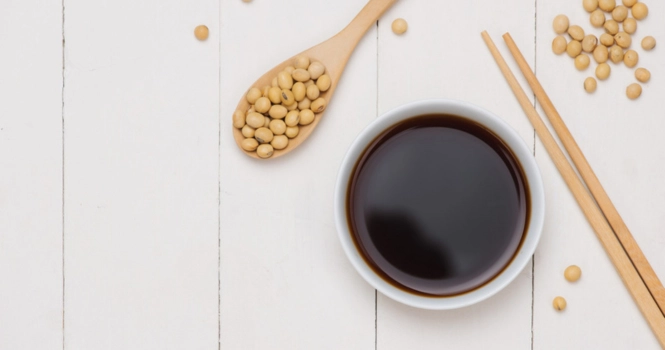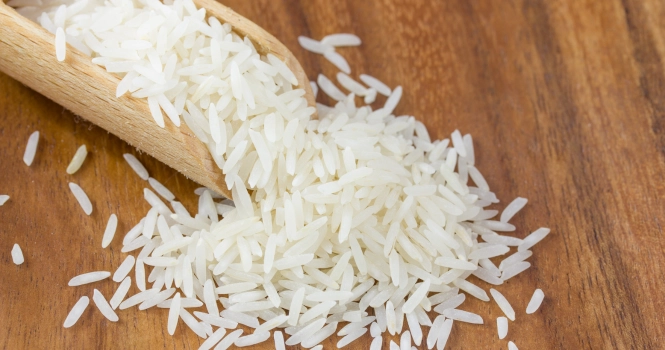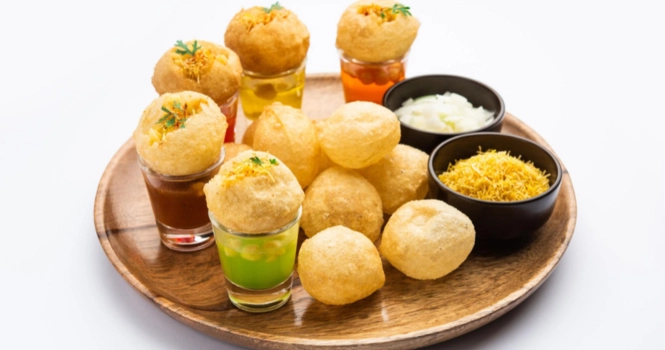The Ultimate Guide to Soy Sauce: Benefits, Uses, and Types

Soy sauce, a staple condiment in many Asian cuisines, boasts a rich history that dates back over two millennia. Its origins can be traced to ancient China, evolving from a meat-based seasoning called “jiang” to the soy-based sauce we are familiar with today.
This transition is believed to have occurred during the Western Han Dynasty (206 BC – 220 AD), making soy sauce one of the oldest condiments still in use.
Brief History and Origin
The ancient Chinese discovered that fermenting a mixture of soybeans, wheat, water, and salt resulted in a savory, umami-rich liquid that enhanced the flavors of their dishes. This fermentation process, which involved the growth of molds on the soy and wheat mixture, was refined over centuries. By the 7th century, it had spread to Japan and other parts of Asia, each region developing its unique variation.
In Japan, the introduction of Buddhism and the associated vegetarian diet propelled the popularity of soy sauce, as it provided a flavorful substitute for meat-based broths. The Japanese further refined the brewing process, giving birth to distinct types such as “tamari,” “shoyu,” and “koikuchi,” each with unique characteristics and uses.
Cultural Significance in Different Cuisines
It is more than just a seasoning; it is a cultural symbol deeply ingrained in the culinary traditions of various Asian countries. In China, it remains a fundamental ingredient in Cantonese, Szechuan, and other regional cuisines, used in marinades, dips, and as a seasoning for stir-fries and stews.
In Japan, soy sauce, or “shoyu,” is an essential component of sushi and sashimi, tempura, and noodle dishes, reflecting the Japanese culinary principle of enhancing natural flavors. Similarly, in Korean cuisine, it is used in marinades for “bulgogi” and “galbi,” as well as in “banchan” (side dishes) and soups.
Beyond Asia, it has been embraced by Western cuisines, becoming a key ingredient in fusion dishes, marinades, and even some desserts, showcasing its versatility and universal appeal.
It’s enduring legacy is a testament to its ability to transcend cultural boundaries, adapting to and enhancing the flavors of a wide array of dishes around the globe. Its rich history and cultural significance make it a fascinating subject for culinary exploration.
Ingredients and Varieties of Soy Sauce
It is a complex condiment, deeply rooted in tradition yet diverse in its varieties and uses. At its core, traditional soy sauce consists of four basic ingredients: soybeans, wheat, salt, and water. These ingredients undergo fermentation, which significantly contributes to the sauce’s characteristic flavor, color, and aroma.
Basic Ingredients of Traditional Soy Sauce
- Soybeans: The primary source of protein in soy sauce, soybeans are responsible for the rich umami flavor.
- Wheat: Wheat is added to the fermentation process, contributing to the sweetness and the complexity of the sauce’s flavor profile. It also affects the sauce’s texture and color.
- Salt: Salt acts as a preservative and flavor enhancer. It also creates an environment conducive to the fermentation process by inhibiting the growth of unwanted bacteria.
- Water: Water is essential for the fermentation process, aiding in the solubilization of the ingredients and facilitating the growth of the fermenting microbes.
Overview of Different Types of Soy Sauce
- Light Soy Sauce (Usukuchi Shoyu): Lighter in color and saltier than its dark counterpart, light soy sauce is often used in Japanese cuisine to season dishes without darkening their color. It’s ideal for soups, broths, and light sauces.
- Dark Soy Sauce (Koikuchi Shoyu): Darker, thicker, and less salty, with a more pronounced sweet and umami flavor, dark soy sauce is used to add color and richness to dishes. It’s common in stews, marinades, and as a table condiment.
- Tamari: Originating from Japan, tamari is made primarily from soybeans, with little to no wheat, making it a popular choice for those avoiding gluten. It’s thicker, darker, and has a more robust flavor than shoyu.
- Shoyu: The Japanese term for soy sauce, shoyu is traditionally brewed and balanced in flavor, making it versatile for a wide range of dishes.
- Low-Sodium Soy Sauce: Created by reducing the salt content during or after the fermentation process, low-sodium soy sauces offer a healthier alternative without significantly compromising flavor.
Regional Variations and Specialty Soy Sauces
- Chinese Soy Sauces: In China, soy sauces can be classified into light and dark varieties, each serving different culinary purposes. Light soy sauce is more commonly used for seasoning, while dark soy sauce is typically used for coloring and marinades.
- Korean Soy Sauce (Ganjang): Korean soy sauce, or ganjang, is made as a by-product of making Doenjang (fermented soybean paste). It’s lighter and used in soups, stews, and dipping sauces.
- Indonesian and Malaysian Soy Sauces (Kecap): In Indonesia and Malaysia, soy sauce is known as “kecap” (pronounced “ketchup”). Kecap manis, a sweet soy sauce thickened with palm sugar, and kecap asin, a saltier version, are popular in these regions.
- Specialty Soy Sauces: These include flavored or infused soy sauces (e.g., with mushrooms, herbs, or spices), aged or vintage soy sauces, and artisanal varieties that offer unique flavors and are often used as finishing sauces.
Each type of soy sauce has its unique flavor profile, viscosity, and culinary use, making soy sauce a versatile ingredient that can enhance a wide array of dishes across different cuisines. Whether used as a dip, marinade, seasoning, or finishing touch, the variety of soy sauces available ensures there’s a type suited to every palate and dish.
Production Process of Soy Sauce
The production of soy sauce is an art that blends tradition with fermentation science. The traditional brewing method, known as “natural brewing” or “fermentation,” is a time-honored process that imparts depth, complexity, and richness to the sauce.
Step-by-Step Explanation of Traditional Soy Sauce Making
1. Soaking and Cooking: Soybeans are soaked in water and then steamed or boiled. Wheat is roasted and crushed. The preparation of these ingredients is crucial for the development of flavor.
2. Koji Cultivation: The cooked soybeans and roasted wheat are mixed and inoculated with a mold, typically *Aspergillus oryzae* or *Aspergillus sojae*. This mixture is known as “koji.” The koji is left to ferment, allowing the mold to break down the proteins and starches into amino acids and sugars.
3. Brining: The koji is transferred to a brine solution (salt and water), creating a mash called “moromi.” The high salt concentration inhibits harmful bacteria, allowing the desired fermentation to proceed.
4. Fermentation: The moromi is left to ferment for several months to several years. During this time, a complex interaction of enzymatic breakdown and microbial activity occurs, contributing to the sauce’s flavor, aroma, and color.
5. Pressing: After fermentation, the moromi is pressed through layers of cloth to separate the liquid soy sauce from the solid residue.
6. Pasteurization: The extracted liquid is pasteurized to halt fermentation, stabilize the flavor, and eliminate any harmful bacteria.
7. Aging: Some soy sauces are aged further to develop more complex flavors. The aging process can vary in time, from a few months to several years.
8. Bottling: The finished soy sauce is bottled and ready for distribution.
Differences Between Traditional Brewing and Modern Manufacturing Methods
While traditional brewing relies on natural fermentation and aging, modern manufacturing methods, known as “chemical” or “acid hydrolysis,” speed up the process.
In chemical hydrolysis, soy proteins are broken down into amino acids using hydrochloric acid.
This method is much faster, taking only a few days, but the resulting soy sauce often lacks the depth and complexity of traditionally brewed soy sauce. Additives and artificial flavorings are sometimes used to mimic the taste of naturally brewed soy sauce.
Aging and Fermentation Process
The aging and fermentation process is central to the development of soy sauce’s unique flavor profile.
During fermentation, enzymes from the koji mold and naturally occurring microbes work together to break down the proteins, fats, and carbohydrates in the soybean and wheat mixture into a complex blend of amino acids, fatty acids, and simple sugars.
This process, along with the aging, contributes to the umami taste, aroma, and color of the soy sauce.
Nutritional Profile
It is valued not only for its flavor but also for its nutritional content, albeit consumed in small quantities due to its strong flavor and high sodium content.
Nutritional Content of Soy Sauce
- Low in Calories: It is low in calories, making it a diet-friendly seasoning when used in moderation.
- Proteins and Amino Acids: It contains small amounts of protein and a complete profile of amino acids derived from soybeans.
- Minerals: It is a good source of certain minerals, such as manganese and selenium.
Health Benefits
- Antioxidants: Certain compounds in it, such as isoflavones and melanoidins (formed during the fermentation process), have antioxidant properties.
- Digestive Health: The fermentation process can produce beneficial probiotics, although they are often lost during pasteurization.
Potential Concerns
- Sodium Content: The main health concern with it is its high sodium content, which can contribute to high blood pressure and cardiovascular disease if consumed in excess.
- Gluten: Traditional soy sauce contains wheat, which is a concern for those with gluten sensitivities or celiac disease. Gluten-free options are available.
Culinary Uses
It is a versatile condiment that enhances the flavor profile of various dishes across many cuisines. Its unique taste, characterized by umami, makes it an indispensable ingredient in both cooking and as a table condiment.
Common Uses in Cooking and as a Condiment
- Marinades: It is commonly used to marinate meat, fish, and tofu, imparting depth and richness to the flavors.
- Stir-Fries: A splash of soy sauce can elevate stir-fried vegetables, noodles, and rice dishes, adding color, flavor, and aroma.
- Soups and Broths: It is often added to soups and broths to enhance their savory qualities.
- Dipping Sauces: It serves as a base for various dipping sauces, mixed with ingredients like vinegar, ginger, garlic, and chili, perfect for dumplings, sushi, and spring rolls.
- Seasoning: A few drops of soy sauce can be used to season salads, stews, and even some dessert recipes to add a complex flavor note.
Tips for Cooking and Pairing
- Balance: It is potent and salty, so it should be used sparingly to avoid overpowering the dish.
- Complementary Flavors: Pair soy sauce with ingredients like sesame oil, ginger, garlic, and honey to create a harmonious flavor profile.
- Acidity: Adding a splash of acidity, such as lime or vinegar, can balance the saltiness of soy sauce in marinades and sauces.
- Heat Sensitivity: Adding it too early in high-heat cooking can cause bitterness. Consider adding it towards the end of cooking to preserve its flavor.
Substitutes and Alternatives
- Tamari: A gluten-free alternative with a similar flavor profile, ideal for those with gluten sensitivities.
- Coconut Aminos: A sweeter, less salty soy sauce substitute made from coconut sap, suitable for soy and gluten-free diets.
- Liquid Aminos: Made from soybeans but not fermented, offering a similar umami flavor with a slightly different taste.
- Fish Sauce: Can be used in small quantities as a substitute, offering umami but with a distinct flavor and higher salt content.
Tasting and Quality
Evaluating the quality of soy sauce is akin to tasting fine wine. It involves assessing its aroma, flavor, color, and consistency.
Guide to Tasting and Evaluating Soy Sauce
- Aroma: High-quality soy sauce should have a pleasant, slightly alcoholic aroma with hints of caramel and toasted grains.
- Flavor: Look for a balance between salty, sweet, and umami notes. The best soy sauces have a complex flavor profile that unfolds gradually.
- Color: It should have a clear, deep brown color, indicative of proper aging and fermentation. It shouldn’t be too dark or murky.
- Consistency: It should have a smooth, slightly viscous consistency, not too watery or overly thick.
Choosing High-Quality Soy Sauce
- Ingredients: Opt for soy sauces with natural ingredients and without unnecessary additives or preservatives.
- Brewing Process: Traditionally brewed (naturally fermented) soy sauces usually offer greater depth and complexity of flavor.
- Brand and Origin: Consider reputable brands and regions known for their soy sauce production, such as Japan, China, and Korea.
Storage and Shelf Life
- Storage: Keep it in a cool, dark place. Refrigeration after opening can preserve its quality and extend its shelf life.
- Shelf Life: Unopened soy sauce can last for several years. Once opened, it’s best used within 3 to 6 months for optimal flavor, although it can remain safe to consume for much longer.
By understanding the culinary uses and learning how to taste and select high-quality soy sauce, you can elevate your cooking and appreciate the nuances of this ancient condiment.
Soy Sauce in Global Cuisines
It is a cornerstone ingredient across various global cuisines, contributing its unique flavor to countless traditional dishes. Its versatility and depth of flavor have made it an integral part of culinary practices in many cultures, particularly in Asian countries.
Role in Culinary Traditions
- Japanese Cuisine: In Japan, soy sauce, or “shoyu,” is essential in sushi and sashimi preparation, lending a subtle umami flavor. It’s also used in “teriyaki” sauce, a popular marinade and glaze for grilled meats and fish, and “soba” noodle dishes.
- Chinese Cuisine: It is fundamental in Chinese cooking, used in everything from stir-fries and marinades to soups and dipping sauces. It’s integral to the flavor of “chow mein,” “fried rice,” and “dim sum” dishes.
- Korean Cuisine: In Korea, soy sauce, known as “ganjang,” is used in marinades for “bulgogi” (grilled marinated beef) and “banchan” (side dishes), as well as in “kimchi” fermentation processes.
Famous Dishes and Recipes
- Teriyaki Chicken (Japan): A sweet and savory dish where chicken is glazed in a mixture of soy sauce, sake, and sugar.
- Mapo Tofu (China): A spicy Sichuan dish featuring tofu and ground meat, seasoned with soy sauce, chili, and bean paste.
- Japchae (Korea): A stir-fried noodle dish with vegetables and meat, flavored with soy sauce and sesame oil.
DIY Soy Sauce
Making soy sauce at home is an adventurous and rewarding project that allows you to experience traditional brewing methods firsthand.
Basic Recipe and Instructions
- Ingredients: You’ll need soybeans, wheat, salt, water, and a koji culture (Aspergillus oryzae).
- Preparation: Soak and cook the soybeans. Roast and crush the wheat.
- Koji Cultivation: Mix the cooked soybeans and wheat, then inoculate with koji spores. Allow the mixture to ferment, creating koji.
- Brining: Add the koji to a saltwater solution to create the moromi (fermentation mash).
- Fermentation: Let the moromi ferment for several months, stirring occasionally to ensure even fermentation.
- Pressing: Strain the moromi to extract the liquid soy sauce.
- Pasteurization: Gently heat the soy sauce to stop fermentation and stabilize the flavor.
- Aging (Optional): Age the soy sauce for additional depth of flavor.
Challenges and Rewards
- Challenges: Home brewing requires patience, especially during the long fermentation process. Maintaining the correct conditions for fermentation and avoiding contamination can also be tricky.
- Rewards: Homemade soy sauce offers a unique, rich flavor that can be customized to your taste. The process provides a deeper appreciation for traditional culinary arts and the satisfaction of creating a complex condiment from simple ingredients.
Soy sauce is more than just a condiment; it’s a cultural heritage that spans continents and centuries, enriching the flavor profiles of countless dishes worldwide.
Whether exploring its role in global cuisines, experimenting with famous recipes, or embarking on the journey of brewing your own, soy sauce offers a world of culinary possibilities. Its umami-rich taste continues to inspire chefs and home cooks alike, proving that this ancient sauce remains a modern kitchen staple.









